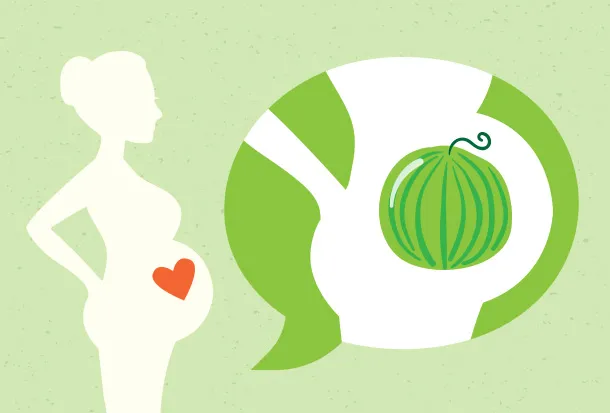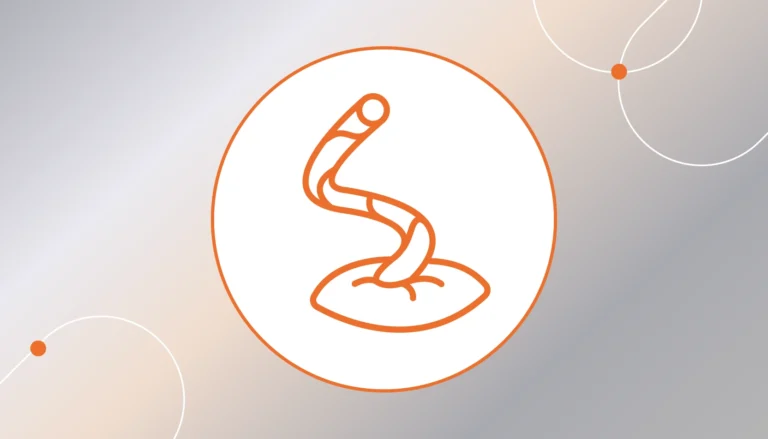W 38. Week the pregnancy is considered to be carried to term. The amount of fetal water then decreases, and the abdomen stops enlarging. The baby has less and less room, so moms may complain of discomfort from pressure on the bladder. The baby in the tummy is not as energetic as before, but its presence can cause a number of discomforts that can be troublesome. A woman may be tired of them, but it is a sign for her to start counting down the days until delivery.
The 38th week of pregnancy – what month is it?
The 38th week is basically the end of the pregnancy. With this week the mother-to-be is already entering her ninth month. This is the time when most of the baby’s key developmental processes have been completed, making her almost fully ready to come into the world and live independently. During this period of pregnancy, regular check-ups with the doctor are extremely important, as any signal could indicate the onset of labor. The doctor monitors the health of the mother and the baby, preparing for possible labor, which can begin at any time.
38th week of pregnancy – baby’s development
At 38 weeks of pregnancy, the baby’s weak movements are not a cause for concern. The reason for this is the small amount of space in the uterus. The toddler is already a large term newborn, so he can’t kick like he used to. The movements are more like stretching. On the other hand, it is worrisome if at 38 weeks of pregnancy the movements of the baby’s scrotum fade, or there are no movements at all. The mother-to-be should go to the hospital and inform the doctor of her concerns. Performing an OCT test should dispel these doubts.
In a small number of cases, the disappearance of movements occurs as a result of the umbilical cord becoming entangled around the baby’s neck, resulting in the disappearance of the baby’s pulse. It is then necessary to have a cesarean section and rescue the baby from distress as soon as possible. However, such situations occur occasionally.
The size and weight of the child in 38. week of pregnancy
At this special time Most toddlers measure about 47-49 cm in length from head to heels. This is comparable to the length of an average carrot! As for the weight, on average the comforter weighs in the range of 3.0-3.2 kg, although, of course, each is unique and these values can vary. The baby’s weight now is similar to that of a small pumpkin. The pacifier in 38. The week is almost fully developed. His lungs and brain are still forming, although most of the important developmental processes have already been completed. It also accumulates a layer of fat that will help it maintain an appropriate body temperature after birth.
Baby’s position and movements at 38. week of pregnancy
W 38. The week of pregnancy, the position and movements of the toddler take on special importance as the moment of delivery approaches. This is the moment when It usually occupies the final position for the birth action, and its mobility gives moms-to-be important signals about its health. The baby’s head faces downward, making it easier to pass through the birth canal. Occasionally, though less frequently, a pelvic (buttocks down) or transverse position may occur, which may require medical intervention such as a cesarean section.
During this time of pregnancy, moms-to-be may notice a change in the frequency and nature of the toddler’s movements. Although the space in the uterus is getting smaller, it is important that the baby continues to move. His movements can be less violent, but they should be regular. It is recommended to monitor the activity of the child, for example, by counting kicks. A change or significant reduction in activity may require consultation with a doctor.
What the body looks like at 38. Week of pregnancy?
The body has gone through an amazing transformation, and weight gain is a completely natural part of pregnancy. Every kilogram is a sign of healthy development of a toddler. Belly at 38. The week of pregnancy is in full swing and looks like a beautiful round ball symbolizing life. The baby is usually positioned with its head down, which signifies its readiness to come into the world. A woman may feel more weight and pressure, which is perfectly normal. For her body is preparing for the finale of this extraordinary journey. Some moms may notice stretch marks – it’s worth remembering that they are a testament to strength and a medal for extraordinary perseverance and love.
The 38th week of pregnancy – the most common symptoms
The mother-to-be may experience a number of symptoms related to the pressure of the baby on certain organs, especially the bladder. Frequent running to the toilet is perfectly normal.
Pregnancy belly is reduced, although this is not the rule (especially in women who give birth for the second time). This can happen even a few days before delivery. The reason for the lowering is the baby’s descent into the birth canal. The abdomen may also be tight. If it’s 38. week of pregnancy, a hard belly is nothing more than a symptom of imminent labor. This may be accompanied by pain. At 38 weeks of pregnancy, period-like abdominal pains are associated with pressure on the nerve caused by the baby’s head inserted into the birth canal.
At this late stage, women may have a shaky and somewhat hobbled gait. This happens often and is nothing special. Swelling also appears, which is impossible to avoid during this period. They are caused by increased weight and circulatory disorders, but do not pose any danger. It is also noticeable significant increase in the volume of the breasts. In the last weeks of pregnancy they fill with milk and become fuller.
During this period, some women may experience mood swings and increased emotionality. This is the result of hormonal changes in the body and the natural tension and anticipation associated with impending childbirth. In addition, mothers-to-be sometimes feel fatigue and an increased need for rest at that time, which is perfectly normal. Their body focuses its energies on supporting the developing child.
Mandatory testing in 38. week of pregnancy
At this stage, only the following is performed on the expectant mother urinalysis and morphology. An imaging study(ultrasound) with assessment of fetal weight is also ordered. At 38 weeks of pregnancy, the ultrasound is to assess the baby’s weight and anatomy. In addition to these tests, the mother performs KTG, which monitors the baby’s heart rhythm and uterine contractions. It allows the doctor to see whether the baby is experiencing stress and whether his heart is working properly. In addition to this, vaginal cultures should also be taken if this test has not been done so far. It is designed to confirm or rule out the presence of Group B Streptococcus β-hemolytic (GBS).
Birth action – first symptoms
At 38 weeks of pregnancy, symptoms of childbirth are preceded by Braxton-Hicks contractions. They are called premonitory contractions. They differ from labor in frequency and duration. They start in the middle of the abdomen and last a short time. The reason for their appearance is the work of the uterus, which is preparing for a solution. They resemble mild periodic pain.
The 38th week of pregnancy may end with the departure of the mucus plug, which does not necessarily mean that the woman is already in labor. The m ucus suppository can break away even a few days before the delivery. At 38 weeks labor will begin with labor contractions, which cannot be mistaken for premonitory contractions.
Read also: How is the 39th week of pregnancy going?
The 38th week of pregnancy – tips for moms-to-be!
Rest and relaxation
Rest is extremely important. The mother-to-be should find time to relax, listen to music, meditate or do other activities that will help her clear her head. During this time, it can also expand their knowledge about childbirth, breastfeeding and caring for a new family member. Knowledge is power, so reading books dedicated to new moms or watching videos can help a woman feel more prepared.
Staying active while listening to your body
If there are no contraindications, moderate physical activity (e.g. walking or exercising on a gym ball) are recommended. This will help keep you physically fit and may make childbirth easier.
Monitoring the baby’s movements
This is essential for the well-being of the toddler. A decrease in activity or a change in activity may be a signal to consult a doctor.
Proper nutrition
Adequate and balanced nutrition is important for both the mother and the developing baby. A diet rich in iron, calcium and protein is key, as is proper hydration. The diet should be based on carbohydrates (especially complex carbohydrates) – it is from them that 45-65% of energy should come.
Preparing a bag for the hospital and defining a birth plan
It’s a good idea to make sure your hospital bag is ready. It should contain the essentials for you and the little one, documents, clothes, toiletries and other things you may need. If the mother has not already done so, she should consider the course of labor as soon as possible. Such a plan should specify your preference for anesthesia, the presence of a partner, the type of delivery and other aspects.
FAQ:
- What the child looks like in 38. Week of pregnancy?
W 38. Week of pregnancy the baby is almost ready to be born. Its length is about 49 cm, and its weight approaches 3 kg. He already has shaped senses, hair on his head and rounded facial features. The lungs and brain continue to develop, preparing for life outside the womb. The toddler often assumes a head-down birthing position.
- What changes in the baby’s movements should be observed at 38. Week of pregnancy?
During this period of pregnancy, the space for the baby in the uterus is limited, so its movements may be less intense, but still regular. A reduction in the number or intensity of movements may require consultation with a doctor. It’s important to keep track of your scrappy baby’s activity on a daily basis, such as by counting kicks, to make sure it’s healthy.
- What pregnancy symptoms a woman can observe at 38. week?
Most women may then experience frequent visits to the toilet, increased tension and a lowered abdomen. Menstrual-like pain, fatigue, swelling and Braxton-Hicks cramps are possible. Increased breast volume, emotional fluctuations, and difficulty sleeping and moving comfortably are also typical symptoms of this period.
Rate this article:









